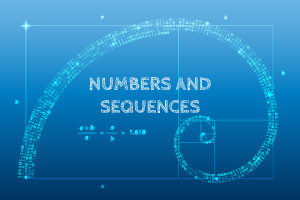Description
Understanding whole numbers, as well as the infinite sequence in which they are arranged, stored, and displayed, is critical to your understanding and ability in mathematics. The course begins with a discussion of how large decimal numbers are written in standard or scientific notation. You will learn how to convert from decimal format to the standard form and back again. You will also learn about working with indices or powers when they are negative, fractional, equal to 0, a set of natural numbers, and how to multiply and divide numbers with indices.
Then you'll learn about patterns with imaginary numbers, what imaginary numbers are, and what rational, irrational, and prime numbers are. The concept of proof by contradiction is then introduced, as well as how to find cubed roots and change the base of a logarithm and solve a logarithmic equation. The second half of module two will walk you through an example of the limit of sequences in mathematics. Following that, you will learn about arithmetic and geometric series, as well as their formulas. You will learn how to deduce an amortisation formula from a geometric series, as well as four different situations in which proof by induction can be used.
Syllabus :
1. Numbers
- Large Numbers in Standard Form
- Changing Decimals to Standard Form
- Changing Large Numbers from Standard Form
- Changing Small Numbers from Standard Form
- Adding and Multiplying Simple Powers
- Working with Indices
- Negative Indices
- Fractional Indices, Numerator of 1
- Index Power Equal to 0
- Positive Fractional Indices All Types
- Negative Fractional Indices
- Writing Index Numbers as a Power of 2
- Quadratic Number Patterns
- Patterns with Imaginary Numbers
- Rational or Irrational
- Proof by Contradiction - Root 2 is Irrational
- Finding the Cube Roots of 8
- Changing the Base of a Logarithm
- Logarithmic Equations
- Limit of Sequences
- Arithmetic Series
- Geometric Series
- Infinite Geometric Series
- Deriving Amortisation Formula from Geometric Series
- Proof by Induction - The Sum of the First N Natural Numbers
- Proof by Induction Applied to a Geometric Series
- Further Proof by Induction
- Further Proof by Induction - Factorials and Powers
2. Complex Numbers
- Manipulating Complex Numbers and The Complex Conjugate
- The Argand Diagram and Modulus
- The Meaning of i
- Patterns with Imaginary Numbers
- Writing Complex Numbers in Polar Form
- Multiplying and Dividing in Polar Form
- Proof of De Moivre's Theorem
- Complex Numbers When Solving Quadratic Equations
- Cubic Equations with Complex Roots
- Finding the Cube Roots of 8
- Complex Numbers









